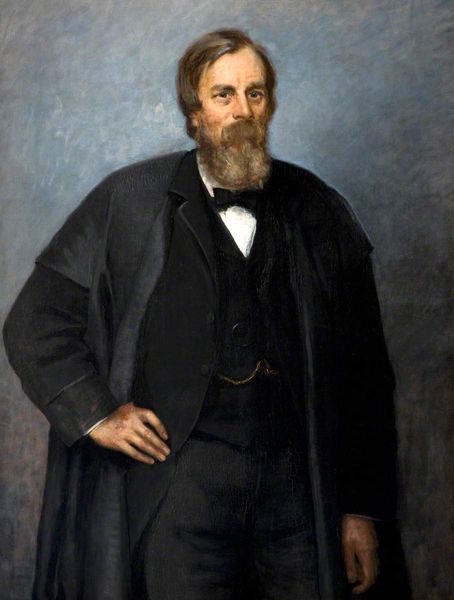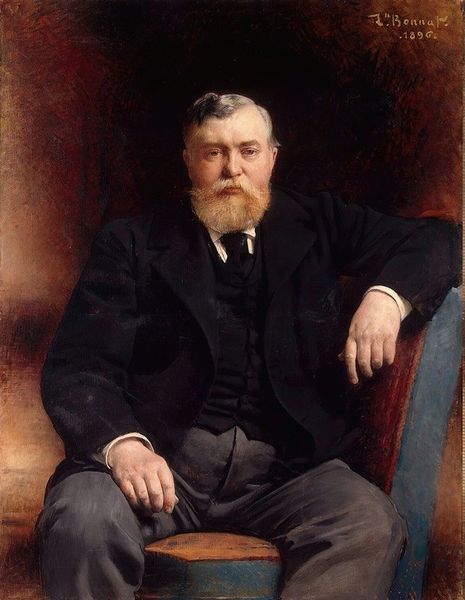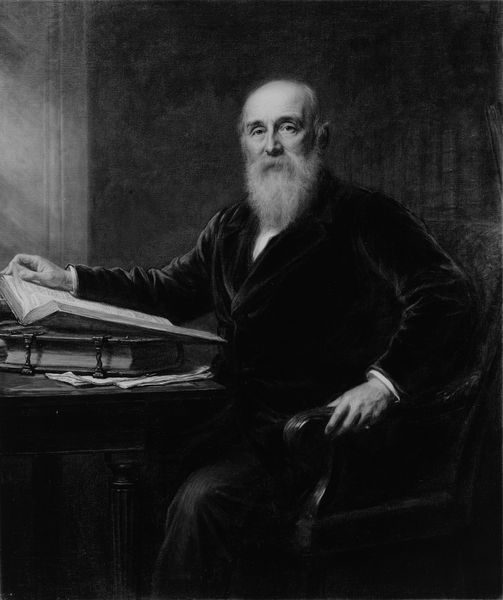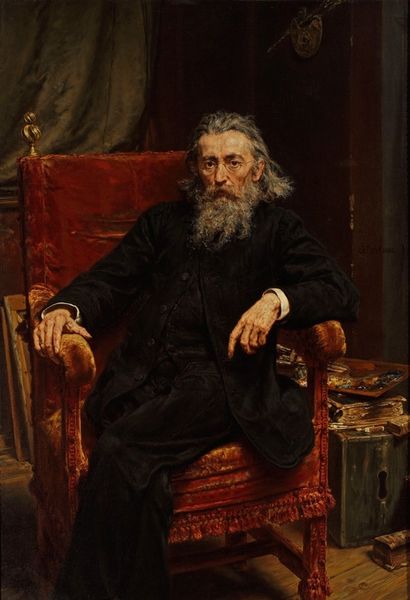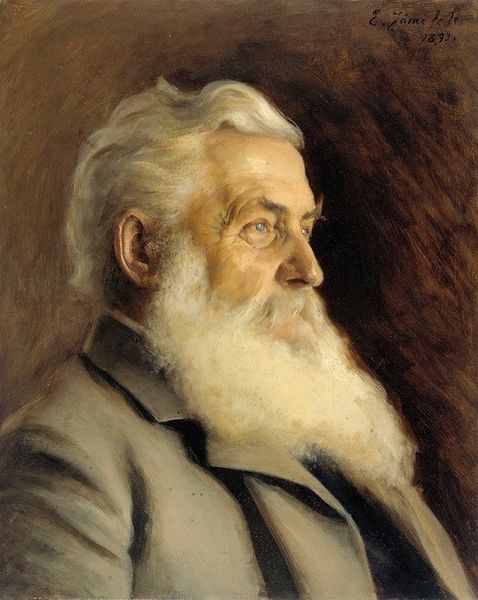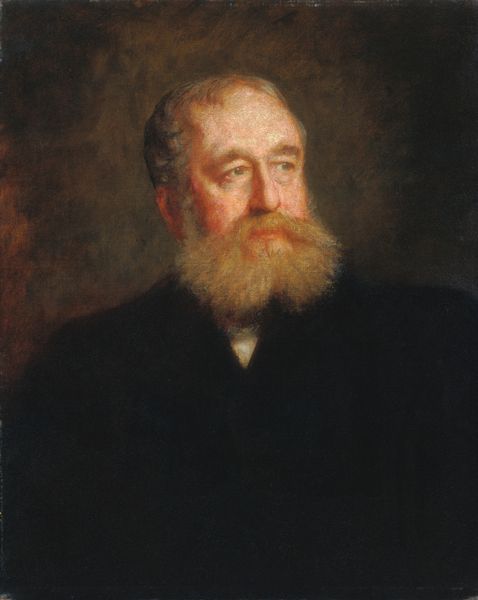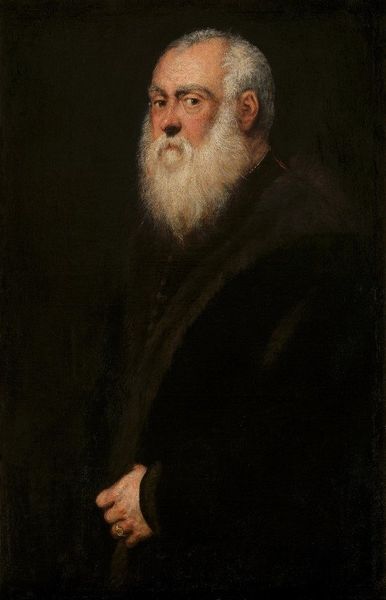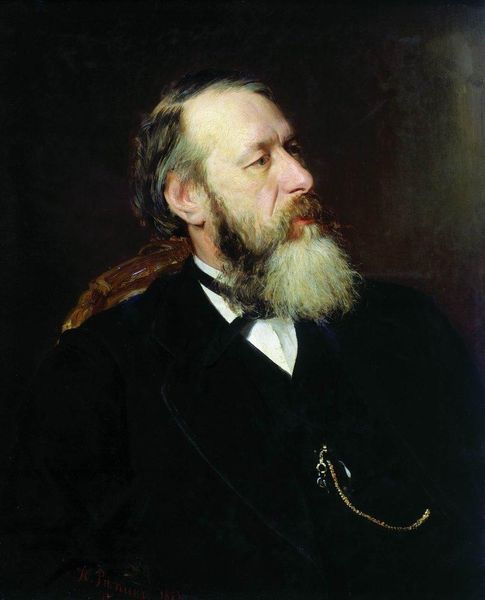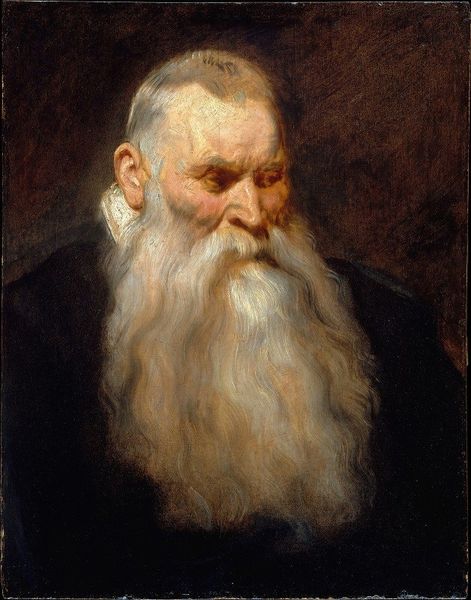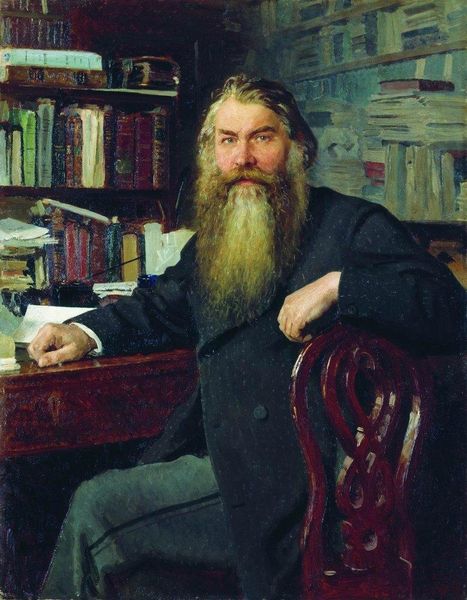
Copyright: Public Domain: Artvee
Editor: Looking at this artwork, an oil painting entitled *Der Schriftsteller Emmerich Ranzoni*, possibly from 1885 by Hans Canon, I’m struck by the formal tone of the man's attire. How should we consider the role that this man, the writer Emmerich Ranzoni, played within the late 19th-century cultural landscape? Curator: Canon presents Ranzoni within a framework of established power and intellectual gravitas, doesn't he? The piece must be understood against the backdrop of Vienna's Ringstrasse era, a time of burgeoning bourgeois influence and liberal thought. The formal presentation of Ranzoni reflects how writers and intellectuals were being strategically positioned as shapers of public opinion and national identity. What impression do you get from his posture? Editor: His seated pose and intense gaze project authority and contemplation. Would it be right to read that this image aims to ennoble Ranzoni and the writer’s profession in general? Curator: Precisely. Consider the broader visual culture of the time – how the rising middle class used portraiture to affirm their status. Canon leverages these existing visual conventions to create an image that isn't just a likeness, but an emblem of intellectual authority during a period of dramatic socio-political change. Is it fair to interpret his somewhat unidealized look, then, as some form of... honesty? Editor: Possibly! So, we might say Canon uses academic techniques to elevate Ranzoni's role in public life? It certainly adds new context to simply viewing it as a portrait of a man with a fantastic beard. Curator: Indeed. By exploring the societal function of art like this, we go beyond surface appearances to understand its role in constructing social narratives. That's how artworks start to reveal new interpretations to us.
Comments
No comments
Be the first to comment and join the conversation on the ultimate creative platform.
